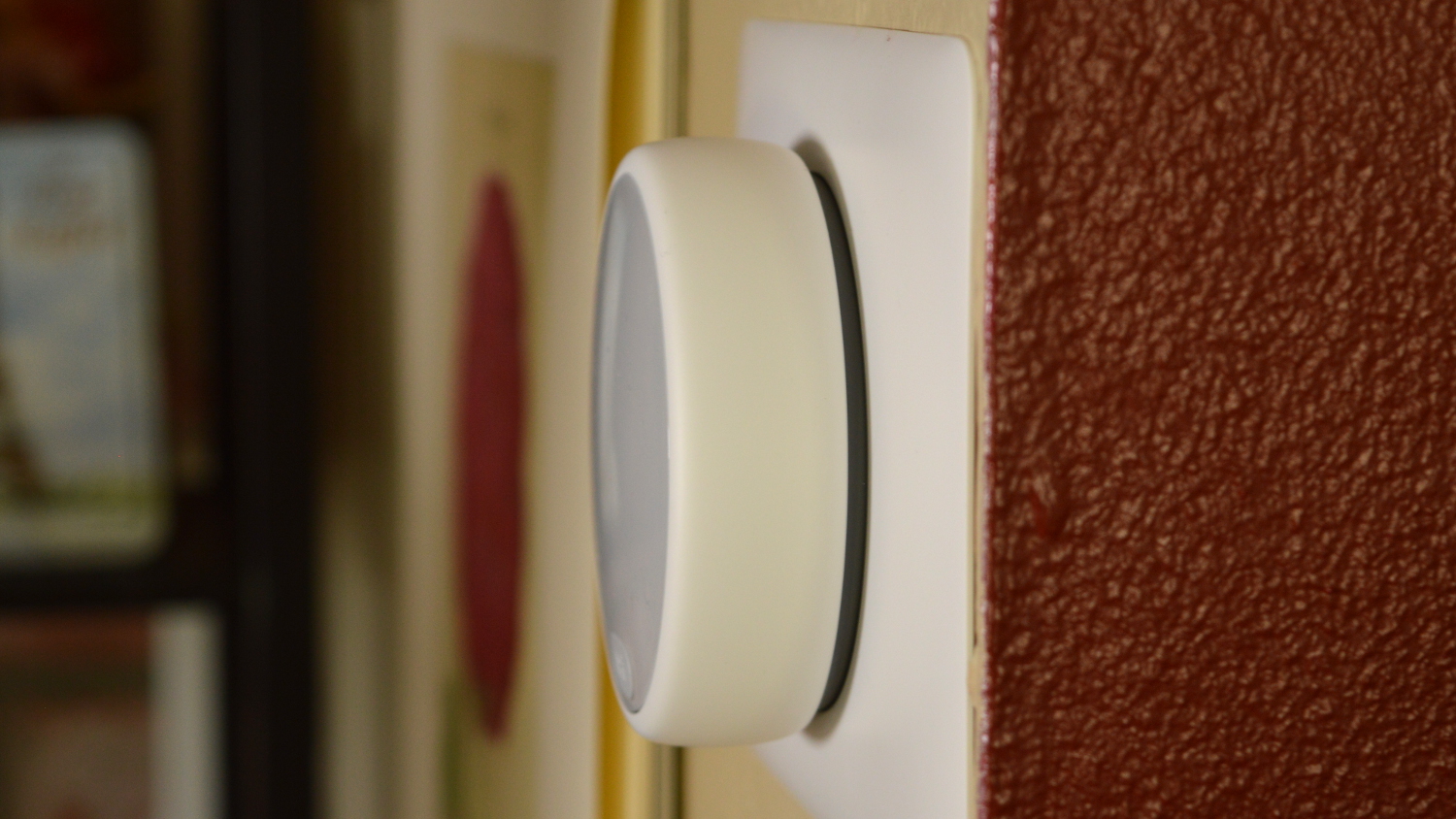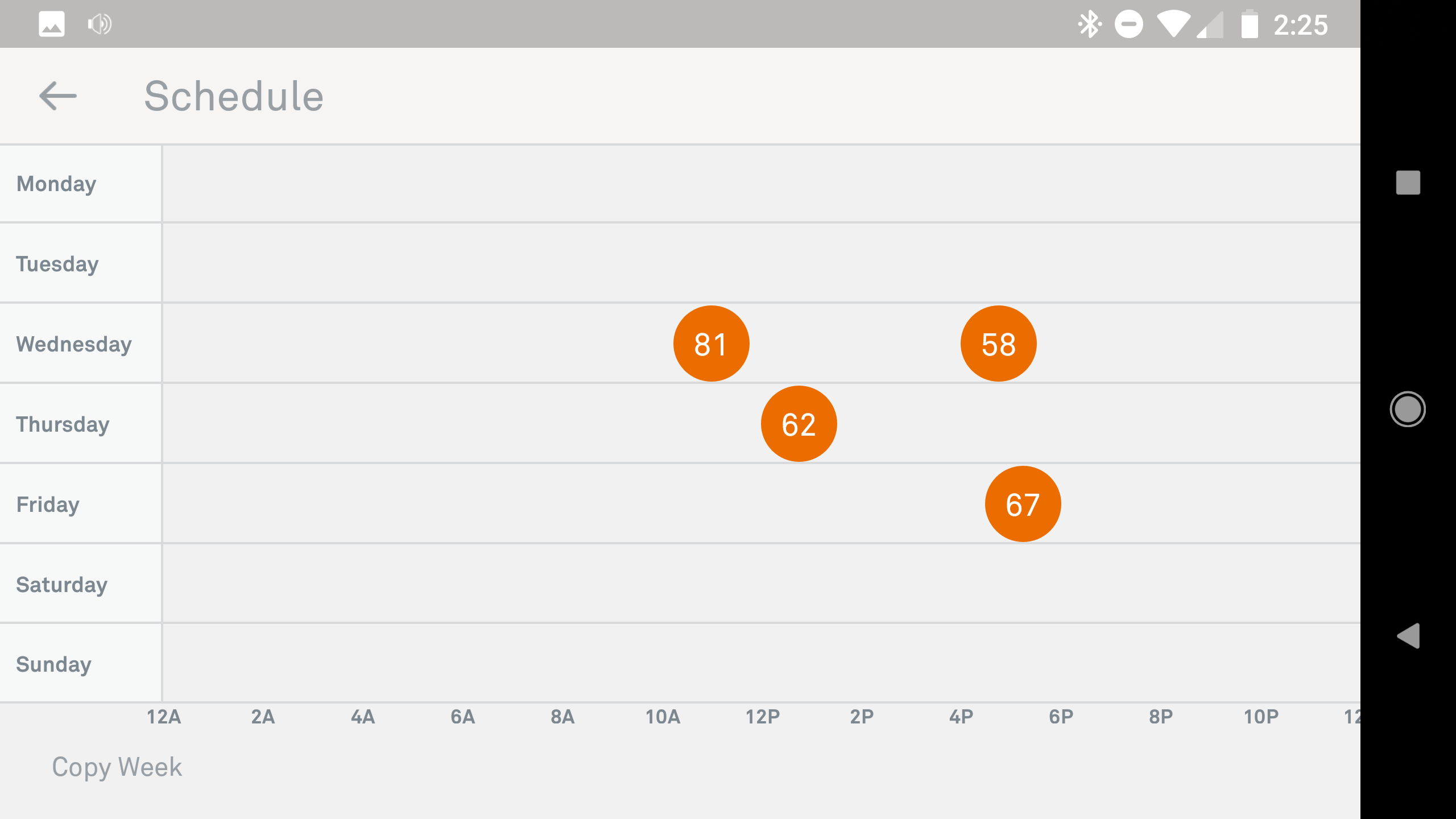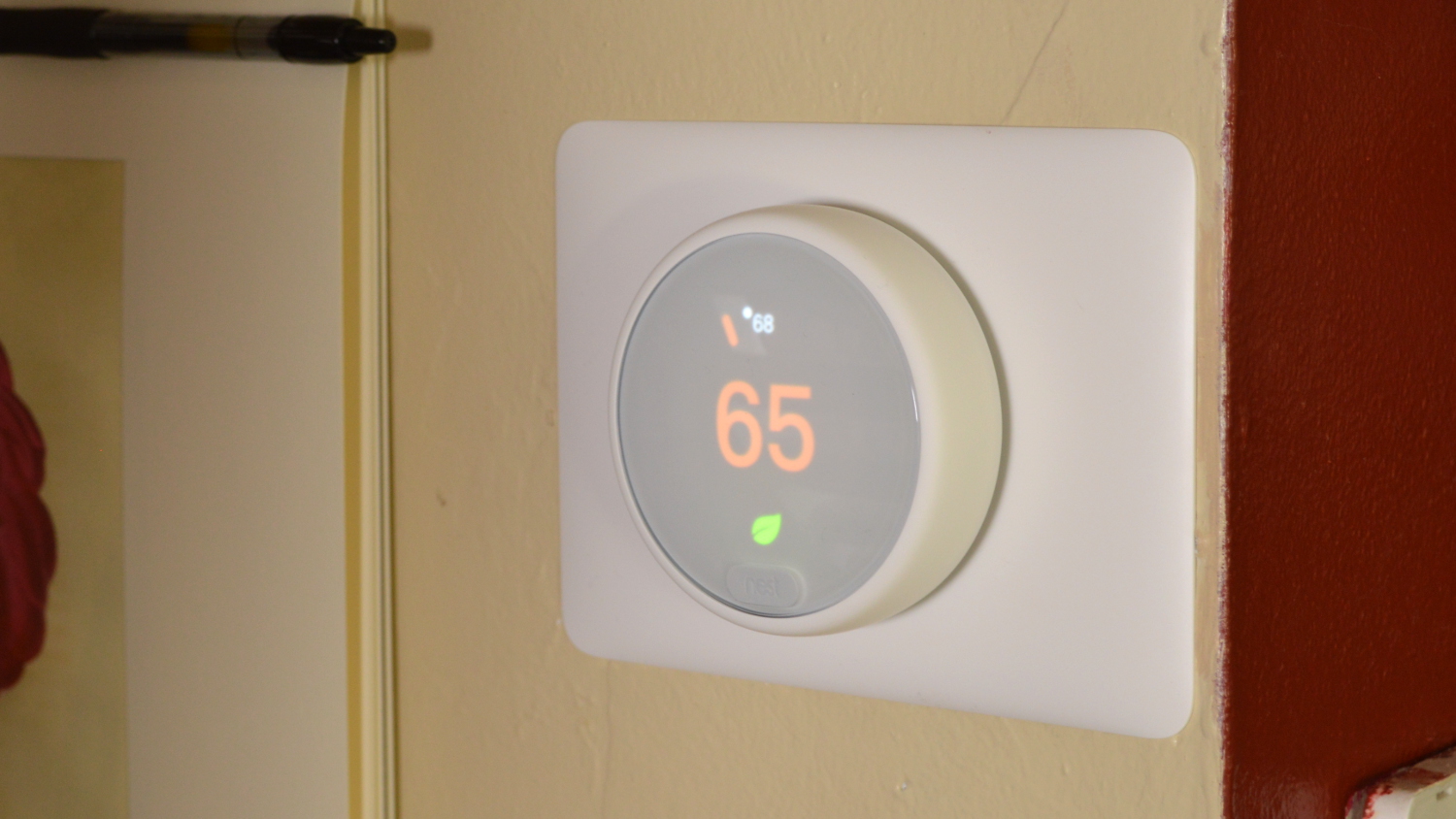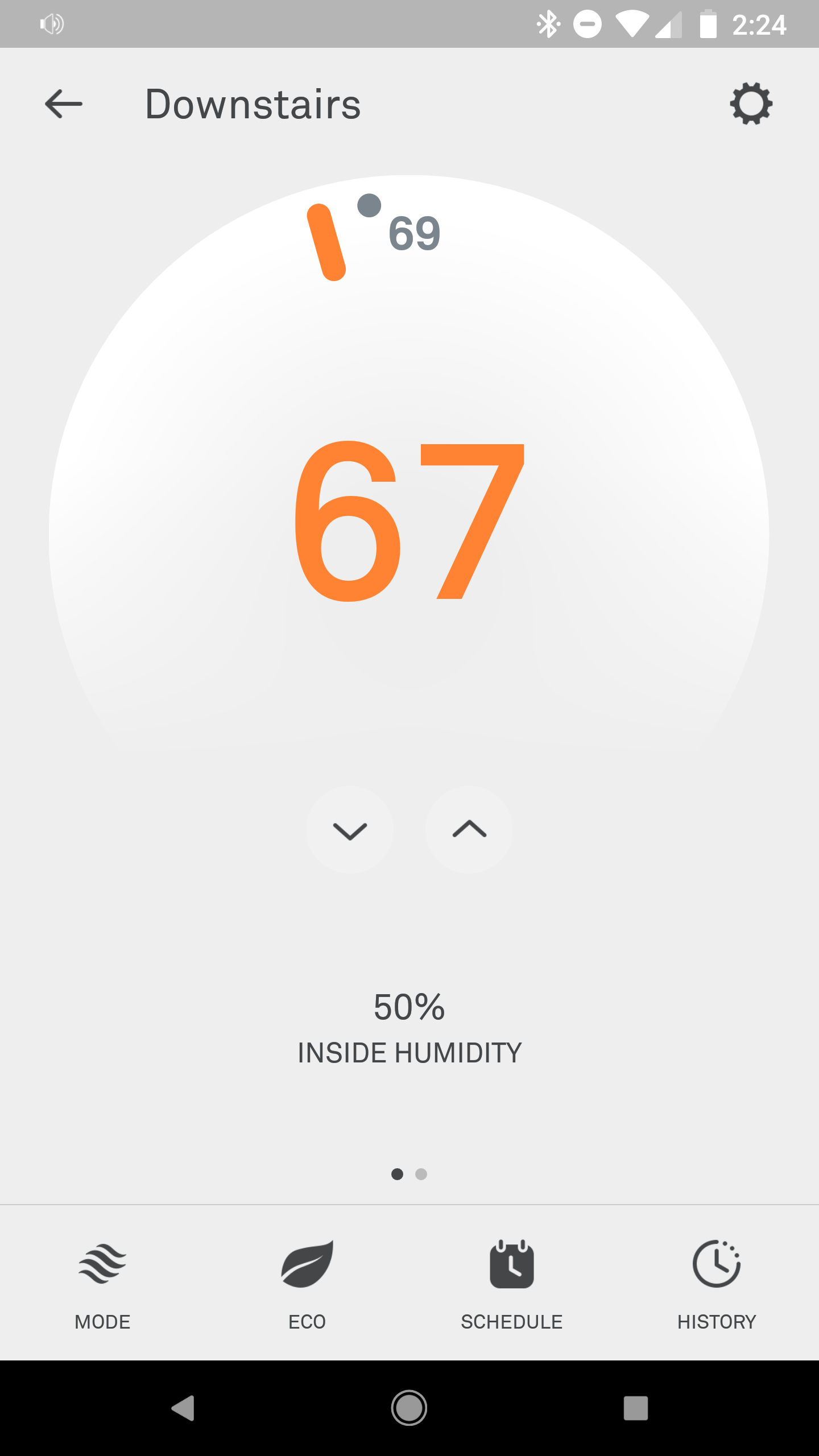TechRadar Verdict
The Nest Thermostat E is the affordable smart thermostat that's primed if you have a budding smart home. You can control the temperature with your smartphone and tablet, or have it auto-adjust based on your proximity to home. Yes, the display isn't as good as the 3rd Gen Nest Thermostat and it isn't compatible with some some HVAC systems, but the price is right for newcomers to smart homes.
Pros
- +
Inexpensive vs Nest Learning Thermostat 3rd Gen
- +
Super smart
- +
Awesome app
Cons
- -
Frosted display can be hard to read
- -
Not compatible with some HVAC systems
Why you can trust TechRadar
The Nest Thermostat E is the affordable way to get a smart thermostat in your home, and it comes with a good name behind it.
Nest was among the first companies to inject machine learning into heating and cooling your home, and since then has been hailed as the best smart thermostat manufacturer. Now, it’s back with a new, more affordable take on the smart thermostat in the Nest Thermostat E.
The Nest Thermostat E might cost less than some other smart thermostats, but it's not exactly cheap either. With that in mind, is Nest’s latest addition to the thermostat line-up worth buying? We put one in our own home to find out.
Price and release date
The Nest Thermostat E price is affordable, at least compared to the more premium Nest Learning Thermostat 3rd Gen. The newer, cheaper smart thermostat costs $169 in the US at launch in September 2017. Now it's down to $139 if you can find a good deal.
The UK version of the Nest Thermostat E finally made its way to the UK in October with a price £199. It'll cost you £259 with professional installation. The Nest Learning Thermostat costs £219 in the UK without professional installation.
You get some of this money back by way of built-in energy saving features, in the US, there's a credit from energy companies that can make the device nearly free.
Design
The first thing you’ll notice about any new product is its design, and the Nest Thermostat E is no different. The device, unlike the standard Nest Learning Thermostat, is white – complete with a slightly frosted display. It’s similar to what we’ve seen before but that’s OK. The circular build has always served the Nest well, and it would be strange to see Nest adopt a different form-factor.
Sign up for breaking news, reviews, opinion, top tech deals, and more.
The puck-shaped device is a little smaller than the original Nest Learning Thermostat, coming in at 3.19-inches versus the standard Nest’s 3.3-inches. But it’s not enough smaller to be really noticeable unless you’re going from a standard Nest to a Thermostat E ... and we doubt that very many people are going to want to do that.

As mentioned, perhaps the biggest design difference between Nests has to do with the frosted, lower resolution display. The Thermostat E’s display comes in at 320 x 320 pixels (against the standard Nest’s 480 x 480). The frosted display makes the Thermostat E slightly harder to read in better-lit situations. That said, it’s not terrible, either – you can still see it pretty well if you have good eyesight, but those that don’t may not be able to see it very well at a distance.
The Thermostat also does away with the standard Nest’s so-called Farsight, which basically turns the display on when you enter a room to show the time, current weather, or temperature. That doesn’t mean the Thermostat E won’t wake when you approach – it will – but only to show the current and target temperatures.
All these downsides, however, are small ones. The display is fine for most situations, and let’s be honest, you’re not going to be watching any movies on your thermostat anyway. The lack of Farsight is a small loss, but only a minor one especially because the thermostat will still show temperature-related information because of the proximity sensor.
Despite a few minor limitations, however, the Nest Thermostat E is super well-designed.

Installation and compatibility
Installing the Nest Thermostat E is just as easy as the standard Nest Learning Thermostat, assuming you have a compatible HVAC system.
To install Nest, you’ll simply remove your old thermostat, take a photo or label the wires attached to it, then attach those wires to the appropriate terminal after you’ve screwed in the base plate. Then push in the main Thermostat unit, and you’re good to go. (Nest says the standard Thermostat works with 95 percent of HVAC systems – while the Thermostat E only works with 85 percent.)
Chances are, your system will still work fine, but you may want to check compatibility here before you begin. The gist of it is that the Nest Learning Thermostat works with complex multi-stage heating and cooling systems, while the Thermostat E does not.
Like the standard Nest, the Thermostat E doesn’t need a common wire to work properly – it’ll draw power from other wires on a 24V system, which isn’t always true in the smart thermostat market.
A big part of how the Thermostat E works is the app, and it’s pretty easy to connect the device to the app too. Once the Thermostat E is installed and powered on, download the app and follow the on-screen instructions to connect the device to your Wi-Fi network. It really is that easy and it shouldn’t take more than 10 or 15 minutes to conduct the entire setup process.
Perhaps the only downside here is that the thermostat doesn’t support external sensors. In other words, it can only determine the temperature through the thermometer on the thermostat itself. You can’t set up sensors in other rooms and control the thermostat through their readings the same way you can with some other smart thermostats. Rumor has it this will change at some point, but we don’t have any solid information about that.
Installation of the Nest Thermostat E is extremely easy, and while the device isn’t as compatible as its more expensive sibling, for most that won’t matter.
Day-to-day use
Once installed and connected to the app, the Thermostat E is a breeze to use – both from the Thermostat itself and from the app.
Let’s start with the actual device. The Thermostat E features a ring around the main unit, which is how you’ll interact with it. There’s no touch-screen here folks, but we would argue that the ring is just as easy and makes more sense in the majority of situations.
From the main screen, you’ll be able to turn the device off, or turn the heating or air conditioning on. Then, simply turn the ring to the desired temperature, and the thermostat will either turn the heater or air conditioner on to achieve that target temperature. It’s really that easy.
Tweaking the settings is also pretty easy. Push the ring in to open up the menu, head to the settings option, press the ring in again, and find the desired setting you want to tweak. After using the thermostat for a few minutes, navigating through the interface will become a breeze and you’ll find changing the settings more than simple.

The app is equally easy to use. To tweak the temperature, you’ll open it up, tap on the thermostat, and simply turn the ring around the temperature – just like you would on the actual device. The device is also pretty good at offering control over multiple devices without feeling cluttered.
Perhaps the best thing about the Thermostat E is that it adjusts to your routine. Simply use it the same way you would any other thermostat for the first few weeks, after which you’ll find that the thermostat will adjust automatically without having to do anything. It’ll also switch on and off based on your location using Home/Away Assist – so you won’t waste any energy when you’re not home, and you’ll find the thermostat adjusting automatically when you are on your way home. That’s good news for those that hate those few minutes in between getting home and heating or cooling the house.
The Thermostat E doesn’t have to adjust to your routine. Scheduling events manually is also super easy: simply head to the app, hit the schedule button, and you’ll be able to tell the thermostat exactly when to change temperature during the week.
Verdict
The Nest Thermostat E proves that you don’t have to shell out for a smart thermostat. It does away with a few, unnecessary features, but it keeps the majority of the smarts and saves you a whole lot of money.
There are few situations in which the Thermostat E isn’t the best choice for you. For example, if you have a high-end multi-stage heating or cooling system, the Learning Thermostat may be a better choice. Still, if the Nest Thermostat E is compatible with your setup and you don’t care about the lack of Farsight or slightly lower quality display, then it’s an excellent option.
First reviewed January 2018
Christian is a writer who's covered technology for many years, for sites including Tom's Guide, Android Central, iMore, CNN, Business Insider and BGR, as well as TechRadar.

